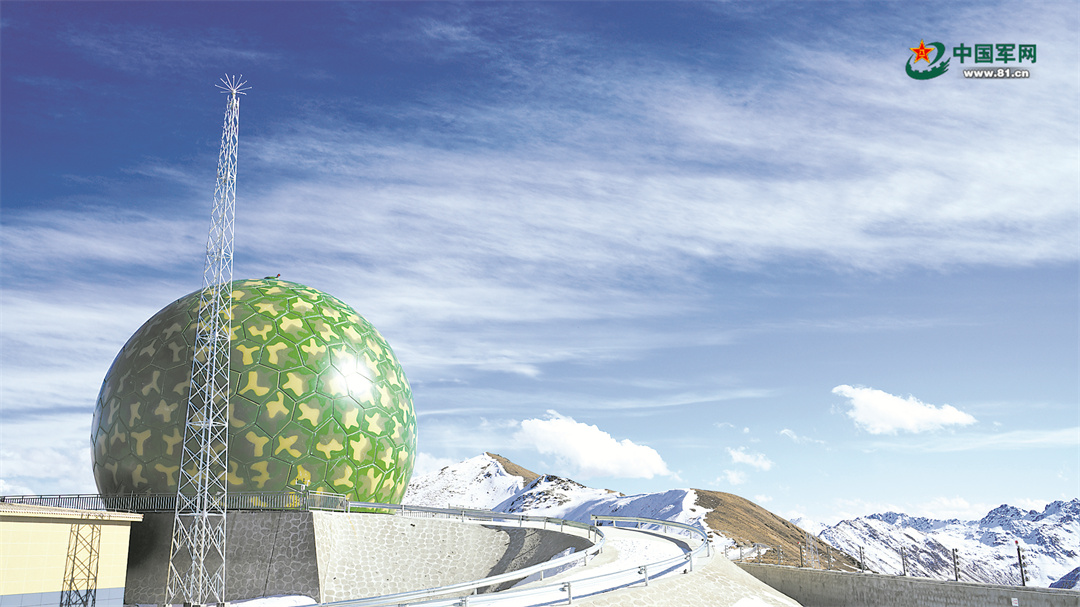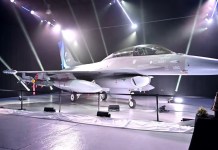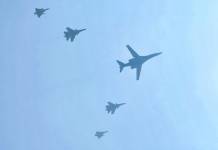China’s Ganbala radar station in Tibet, which was long touted as the world’s highest manually operated radar station, is now controlled remotely rather than by stationing personnel on-site, reported PLA Daily, the official publication of the People’s Liberation Army.
The new report revealed that the staff of the Ganbala radar station relocated from the top of a snowy mountain at an elevation of more than 5,100 meters to the main control end at the height of more than 3,000 meters.
Looking at the airborne radar antenna, Chen Qiang, a staff officer with an undisclosed air force radar brigade, told the outlet that the days of radar warriors stationed at high altitudes all year are gone.
The deployment requirements stated by the 20th CPC National Congress, including “increasing the proportion of combat forces of new quality in new areas and expediting the development of unmanned intelligent combat forces,” have been fully accomplished by the Air Force of the Western Theater, the report said.

Furthermore, the report noted that new radars have already been installed at several high-altitude radar sites, and they were switched to a new duty mode.
The Ganbala radar station is one of several radar stations that cover southern Tibet and is situated on a mountain peak in China’s Tibet Autonomous Region. The station, frequently featured in Chinese media, is notable for its altitude and strategic location.
It was built in 1967 and is crucial in observing the airspace over Tibet’s southern region. It has also been labeled as the highest military installation in the world, standing at 5374 meters above sea level.
There are three main types of radar installations in the PLAAF. Air traffic control (ATC) and senior officers in the control tower employ the first type, found at airfields, to direct pilots toward their desired targets.
The second type consists of radars strategically placed along China’s borders for long- and medium-range detection. This radar system, such as Ganbala, is typically found on mountaintops.
The third category comprises over-the-horizon radars (OTHR) utilized for early warning near China’s coastline. The PLAAF employs three primary radars: long-range, medium-range, and short-range.
Why Is China Moving Toward Remotely-Operated Radar Stations?
In the past few years, China has actively pushed to install new remote-control radars in various locations and is continually developing innovative ways to perform combat readiness duties. These initiatives appear to be targeted at improving overall combat effectiveness.
The development will reportedly lessen several logistical and maintenance-related problems and boost Chinese forces’ effectiveness in high-altitude zones. According to Chen Qiang, most radar installations are situated on impassable slopes blanketed with snow.
Along with the mountains’ enduring heavy snowfall and closure, the intense cold, oxygen deprivation, and high winds threaten the officers’ health. Furthermore, Qiang noted that these conditions make it difficult to maintain equipment and provide logistical support.

A sergeant major of the first class named Wang Shengquan, who has been guarding the plateau radar station for 27 years, remarked that “In the past, we held the position on the top of the mountain for many years, but now we are on duty remotely from different places, and our combat readiness, training, and life have undergone earth-shaking changes.”
That being said, the new equipment and operational mode free up more energy for PLA forces to focus on improving battle readiness and combat effectiveness by diverting their attention away from combating the hostile environment.
Plateau radar stations have consistently used the “one station, two points” duty mode in recent years. This implies that the station’s headquarters and the radar position are not located in the same location.
According to the report, the new form of radar allows officers and soldiers to conduct practical training at any moment without having to change locations, and they can also carry out network confrontations across stations to support the close coupling of combat training.
The report stated that the shift from “guarding the mountain” to “entering the battlefield” has been accomplished and that the radar station’s primary support staff has joined the mobile detachment and taken part in the joint training for systematic combat across areas.
Overall, with the addition of the new framework, the air force radar brigade in the region is well-positioned to carry out the demands of vigorously pushing actual combat military training, intensifying joint training, confrontation training, and scientific and technology military training.
- Contact the author at ashishmichel(at)gmail.com
- Follow EurAsian Times on Google News




